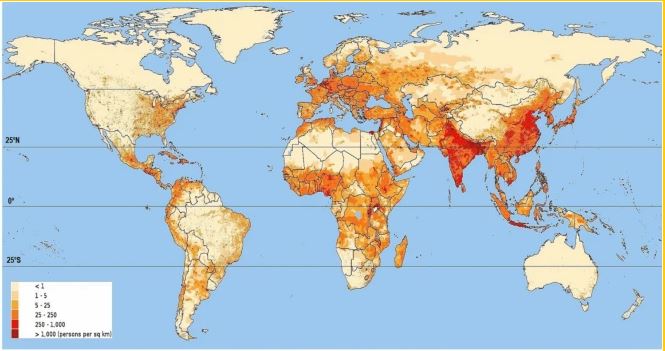Gli articoli di Campanialive.it
Detection of non‐climatic biases in land surface temperature records
Autore: Prof. Nicola Scafetta - Federico II Napoli
18/01/2021 (letto 782 volte)
Detection of non‐climatic biases in land surface temperature records by comparing climatic data and their model simulations

Abstract:
The 0.6 °C warming observed in global temperature datasets from 1940 to 1960 to 2000–2020 can be partially due to urban heat island (UHI) and other non-climatic biases in the underlying data, although several previous studies have argued to the contrary. Here we identify land regions where such biases could be present by locally evaluating their diurnal temperature range (DTR = TMax − TMin trends between the decades 1945–1954 and 2005–2014 and between the decades 1951–1960 and 1991–2000 versus their synthetic hindcasts produced by the CMIP5 models. Vast regions of Asia (in particular Russia and China) and North America, a significant part of Europe, part of Oceania, and relatively small parts of South America (in particular Colombia and Venezuela) and Africa show DTR reductions up to 0.5–1.5 °C larger than the hindcasted ones, mostly where fast urbanization has occurred, such as in central-east China. Besides, it is found: (1) from May to October, TMax globally warmed 40% less than the hindcast; (2) in Greenland, which appears nearly free of any non-climatic contamination, TMean warmed about 50% less than the hindcast; (3) the world macro-regions with, on average, the lowest DTR reductions and with low urbanization (60S-30N:120 W–90 E and 60 S–10 N:90 E–180 E: Central and South America, Africa, and Oceania) warmed about 20–30% less than the models’ hindcast. Yet, the world macro-region with, on average, the largest DTR reductions and with high urbanization (30 N–80 N:180 W–180 E: most of North America, Europe, and Central Asia) warmed just a little bit more (5%) than the hindcast, which indicates that the models well agree only with potentially problematic temperature records. Indeed, also tree-based proxy temperature reconstructions covering the 30°N–70°N land area produce significantly less warming than the correspondent instrumentally-based temperature record since 1980. Finally, we compare land and sea surface temperature data versus their CMIP5 simulations and find that 25–45% of the 1 °C land warming from 1940–1960 to 2000–2020 could be due to non-climatic biases. By merging the sea surface temperature record (assumed to be correct) and an adjusted land temperature record based on the model prediction, the global warming during the same period is found to be 15–25% lower than reported. The corrected warming is compatible with that shown by the satellite UAH MSU v6.0 low troposphere global temperature record since 1979. Implications for climate model evaluation and future global warming estimates are briefly addressed.
Cliccare sull'icona del file pdf per scaricare l'articolo. Dim. 6.46 Mb

Condividi: |
 |
 |
 |








